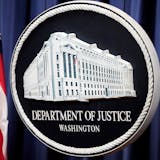Want to figure out what Minnesota's next state bird could be?
Two unusual sculptures at the Commons Park in downtown Minneapolis offer a guide on the possibilities as rising temperatures alter the state's climate.
How about the little blue heron? It doesn't live here now, but the art installations — a deft combination of data and design — point out that in 80 years it's likely to become a prevalent species.
But the loon — Minnesota's beloved state bird with its haunting cry — will move out of the state as the climate gets warmer and its ecosystems shift to the north.
Named Orbacles — orb for their round shapes and oracle for their predictions — the towers illustrate a tangible outcome of climate change and the way Minnesota's identity could change, said the designers.
"Birds are a lens on climate," said Marc Swackhamer, head of the University of Minnesota School of Architecture and member of the MINN_LAB design collective that conceived and built the project for a contest sponsored by the city of Minneapolis. "We [used] changes in the bird populations to make climate change more understandable."
The idea, he said, was also inspired by the bird controversy at U.S. Bank Stadium, which looms over the sculptures on the east side the park. The Minnesota Sports Facilities Authority and the Vikings are spending $300,000 to determine if the stadium's massive glass walls are fatally invisible to some of the millions of birds that use the nearby Mississippi River as a migratory flyway. It's evident, Swackhamer said, that a lot of people care about birds.
Their fate also fit into the theme of the June 10 Northern Spark festival — "Climate Chaos/People Rising." The Orbacles installation, funded by $50,000 from the city and a $60,000 grant from the University of Minnesota, was first in the chain of artwork set up along the Green Line light-rail stops.



